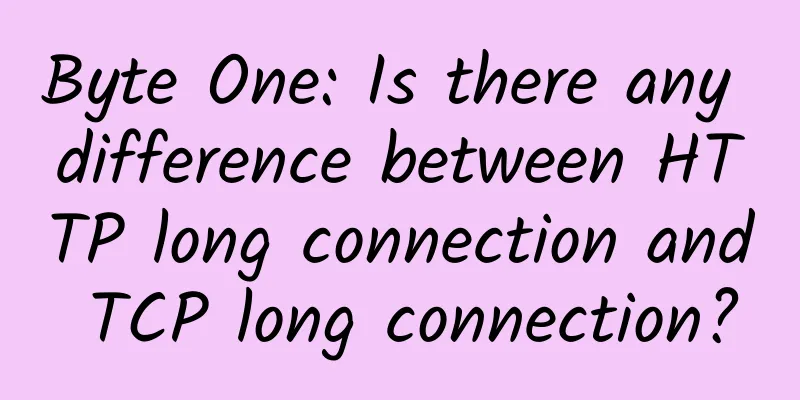Wi-Fi 7 is here! Ruijie adheres to scenario-based innovation and steps up efforts in the new wireless network era

|
Wi-Fi is ubiquitous in today's world, and its application value and commercial value have been widely recognized by the industry. ABI Research, a global technology intelligence market company, predicts that the global Wi-Fi IoT market will grow from approximately 2.3 billion connections in 2021 to 6.7 billion connections in 2026. As access devices continue to grow and access requirements become more diverse, Wi-Fi technology has been continuously innovating in terms of performance, capacity, and coverage. With the development of communication technology, the door to Wi-Fi 7 is gradually opening to us. As the next generation of Wi-Fi standard, Wi-Fi 7 will provide higher data transmission rates and lower latency than Wi-Fi 6. What new imaginative space does the development of the new generation of wireless protocols bring to thousands of industries? How to cope with the technological revolution led by Wi-Fi 7? Recently, the Ruijie Wi-Fi 7 new product media conference "Experience Revolution, Connect the Future" was held in Beijing. The launch of Ruijie's full-scenario Wi-Fi 7 solution has added a strong annotation to the future vision of Wi-Fi development. Today's wireless networks: scenario-based requirements upgradeAs Wi-Fi technology continues to upgrade, WiFi is rapidly expanding to innovative consumer electronic devices, vehicles and other IoT devices. With the advent of the Internet of Everything era, the value of Wi-Fi has changed from single connection data to diversified connection services and business intelligence. Shi Jiangtao, Product Director of Ruijie Networks' Wireless Products Division, first mentioned that wireless networks in today's world "have expanded from the well-known fields of Internet access, office, entertainment, etc. to industrial-grade applications. The connected terminals are no longer just mobile phones and computers, but have expanded to various professional terminals, such as AGV mobile carts, Pads used for mobile rounds, and vehicle-machine communications." As wireless networks gradually enter the core business of every organization, scenario-based requirements are constantly upgrading. Office scenarios require access to high-performance wireless networks anytime and anywhere to meet the needs of mobile and hybrid offices; production scenarios have relatively high requirements for the real-time nature of data and the transmission of instructions, and require high-speed, stable, and non-disconnected wireless networks; large campus scenarios require the deployment of a large number of APs, and how to efficiently operate and maintain wireless networks is often a top priority... Shi Jiangtao concluded that the integration of wireless networks and vertical industry applications is deepening, and wireless networks have expanded from entertainment and office to empowering and improving organizations. Based on Ruijie Networks' years of industry experience, the application of wireless APs today needs to meet the following key points: First, it has industrial-grade quality and can adapt to extreme special environments such as high speed, severe cold, lightning and wind. Second, the performance is excellent, so that the transmission effect will not be affected when the wireless terminal enters different scenarios such as high-density access, mobile roaming, and remote collaboration. Third, efficient operation and maintenance, especially for large campuses and multiple branches, requires simplified operation and maintenance management. Fourth, support for Internet of Things applications requires flexible networking and free expansion in scenarios such as smart medical care, smart manufacturing, and smart transportation. Fifth, meet the demand for high cost performance and reduce TCO costs. Wi-Fi 7 changes: 20% faster speedThe increasing number of wireless applications and the emergence of wireless terminal devices have put forward higher requirements for wireless networks, especially Wi-Fi wireless networks based on the 802.11 technical standard. Looking back at the development history of Wi-Fi technology over the past 20 years, from the first generation of Wi-Fi to Wi-Fi 6 and Wi-Fi 7, each innovation has increased the number, types and coverage of access terminals. Shi Jiangtao introduced: "With Wi-Fi 7, the maximum theoretical rate of the overall core technology can reach 46Gbps, and the performance of the whole device is 4.8 times that of Wi-Fi 6." Specifically, compared with Wi-Fi 6, its key technical changes are: First, the introduction of higher-order 4096-QAM modulation technology increases the rate by 20% . The highest modulation mode of Wi-Fi 6 is 1024-QAM, and the modulation symbol carries 10 bits. Wi-Fi 7 introduces 4096-QAM, which makes the modulation symbol carry 12 bits and improves the data processing capacity by 20%. Second, it supports a maximum bandwidth of 320MHz, a 100% increase in bandwidth. The maximum available bandwidth is increased from 160MHz to 320MHz, doubling the channel capacity; the number of spatial streams is increased from 8 to 16, doubling the number of terminals connected at the same time. Third, MRU and preamble puncturing technologies improve anti-interference capabilities . Wi-Fi 7 adds a new resource unit (RU) allocation mechanism. MRU further improves spectrum utilization efficiency and provides greater flexibility in bandwidth (QoS) control for each STA as needed. Fourth, MLO multi-link technology . This is a very important feature in Wi-Fi 7. Multi-link operation enables devices to send and receive simultaneously on multiple different frequency bands and channels, which is conducive to improving throughput, reducing interference, and reducing latency. Shi Jiangtao said that with the support brought by the overall protocol of Wi-Fi 7, data transmission has been greatly optimized at the theoretical level. In the long run, this will greatly promote the explosion of applications such as VR, metaverse, and cloud games in the future. However, it cannot be ignored that there is still a practical path to go from theory to practice, and industry users will still face certain challenges when building networks. According to Ruijie Networks' observations, user pain points are mainly concentrated in four aspects: How to ensure the network experience in high-density multi-user scenarios? How to ensure the experience of key business or VIP users? How to ensure business stability during mobility? How to make wireless operation and maintenance simpler and smarter? In response to this, Ruijie Networks has created a Wi-Fi 7 full-scenario solution. "We ensure business continuity through high-performance coverage, reduce the cost of network construction and use, improve maintenance efficiency, reduce the overall TCO cost, and make the entire network more intelligent." Ruijie's solution: Solving pain points one by oneRuijie has been working on solving many application problems in real scenarios since entering the wireless industry, and Wi-Fi 7 is no exception. Ruijie has made the following deployments and explorations around the pain points mentioned above. First, scenario-based smart antennas are introduced for high-density multi-user scenarios . According to Shi Jiangtao, Ruijie introduced the first generation of smart antennas as early as the Wi-Fi 5 era, and is still moving forward today. "The design of the overall antenna adheres to one concept - we focus on high-density access and low-density and long-range coverage scenarios, and provide better RF transmission for users at different angles and for different applications through different antennas." Taking the antenna design of Ruijie's new AP9850-R as an example, scenario-based smart antennas can improve user experience in high-density multi-user scenarios based on dynamic adjustment of antenna angles. Secondly, for key services, air interface scheduling and spectrum reservation technologies are used . It is reported that Ruijie has explored certain solutions in the Wi-Fi 6 era, using DPI\DFI to identify the application to which the message flow belongs and group them, and then using QoS overall guarantee to allocate bandwidth to different user groups. When it comes to Wi-Fi 7, Ruijie uses air interface scheduling and spectrum reservation technologies based on Wi-Fi 7 Multi-RU technology to open up exclusive fast lanes for key services and VIP terminals from both the time domain and frequency domain perspectives, making wireless key service guarantee technology more refined. Furthermore, to ensure the stability of mobile services, a twin digital model of the customer scenario is built . "We have added the perception of the physical location of the space to the antenna link, which can integrate communication, positioning and perception. An AP emits electromagnetic waves in a normal space. Through different reflections, we can use the entire physical space as a mapping of the digital space." Ruijie builds a twin digital model of the customer scenario in this way, obtains the physical location information of the access terminal in real time, and thus more accurately guides the terminal to achieve better roaming effects. Finally, for operation and maintenance management, digital twin operation and maintenance is built . Thanks to the improvement of Wi-Fi 7 performance and the optimization of antenna space perception technology, Ruijie WIS digital twin network management combines Wi-Fi 7 features to achieve full-size visibility of the entire physical device and full-time visibility of the entire real-time data. At the same time, it further improves network visualization and brings a more intuitive interface experience to operation and maintenance personnel. Looking to the future, Shi Jiangtao said: "The integration of multiple networks and the addition of integrated management of 5G and IoT will bring more room for imagination, which is also one of the directions we are developing." According to reports, in the coming year, Ruijie will launch corresponding AP models in different scenarios such as installation, panel, outdoor, intelligent distribution, and high-density, and promote Wi-Fi 7 to enable wireless experience innovation in vertical industries. Wi-Fi industry outlook: a long way to goAt the meeting, two other industry experts shared their views on Wi-Fi development trends and standardization certification. Jerry Huang, managing director of business affairs for the Asia Pacific region at Wi-Fi Alliance, said that Wi-Fi, with its affordability, security, ease of use, self-deployment and long-term compatibility, has played an important role in expanding network coverage worldwide and promoting the development of various industries. When asked about the often-asked question of "the battle between Wi-Fi and 5G", Jerry Huang said that it is not a question of who will replace whom, but rather a relationship of complementary coexistence. "Because operators have found that Wi-Fi is a good complementary solution for operator networks, they use Wi-Fi to supplement it in many aspects, which can achieve better results in terms of cost and efficiency." In Jerry Huang's view, each generation of Wi-Fi technology based on the IEEE wireless communication standard 802.11 brings faster speeds, lower latency and better user experience. It is foreseeable that the development of Wi-Fi 7 will also bring about a multiple increase in applications and coverage. Peng Zhen, director of the International Department of the National Radio Monitoring Center Testing Center, mainly introduced the principles for establishing Wi-Fi product certification and the regulatory and technical requirements for 802.11be equipment. Peng Zhen also mentioned that in June this year, the government officially issued a document for public comments on the "Notice of the State Radio Office on the Technical Requirements and Test Methods for the Approval of New Models of Wireless LAN Equipment Adopting the IEEE 802.11be Technical Standard (Draft for Comments)". "The reason for the release of this document is that the promotion of IEEE 802.11be technology will have some special features, especially in multi-link operation." At present, the access management policies for radio equipment at home and abroad show a trend of finer regulatory granularity, wider coverage of equipment, and stricter technical constraints. The new technical requirements for IEEE802.be technical equipment will more effectively promote the development of new technology service-related industries. Final ThoughtsIn Alice Through the Looking Glass, the Red Queen said: "In this place we are, you have to keep running to stay where you are. If you want to get to another place, you have to run twice as fast as you are now." It can be seen that as Wi-Fi 7 gradually opens its doors to us, a new communication technology revolution will sweep the world. In this context, running fast is not enough. Only by running a little faster than your opponent can you gain the upper hand. Ruijie's launch of the full-scenario Wi-Fi 7 solution may also be based on this reason, and its confidence comes from years of research and development and in-depth scene innovation. When Wi-Fi 7 is officially popularized, we may expect Ruijie to bring new surprises. |
<<: V2X communication: A new era of cooperation between vehicles and infrastructure
Recommend
6G Internet of Things: From the Internet of Everything to the Intelligent Internet of Everything, opening up smart life, smart production and smart society
At the 6G Internet of Things Forum of the 4th Chi...
WiFi will be replaced? Not 5G
The pace of life of modern people is getting fast...
Media Statement on the U.S. Department of Commerce’s Modification of the Direct Product Rule Regarding Huawei
Huawei strongly opposes the US Department of Comm...
How to implement message communication elegantly?
[[339299]] This article is reprinted from the WeC...
China Mobile announces it has built more than 500,000 5G base stations
On the afternoon of August 31, the 2021 World 5G ...
By 2026, NB-IoT market size will exceed US$31.9 billion
According to a Valuates report, the global narrow...
Digital China is moving towards a deeper and more practical digital economy.
"Vigorously develop the digital economy, imp...
How are 5G charges calculated: This is what the operators say. Are you willing to pay more?
An operator insider confirmed to IT Times, "...
A white-label vendor's perspective: The evolution of minimalist switch NOS
Traditional switch operating systems (NOS) are a ...
BICS Group acquires 3m Digital Networks to accelerate transformation into communications platform provider
MicrosoftInternetExplorer402DocumentNotSpecified7....
5G will change the world. What does it mean for regulations?
The Fourth Industrial Revolution will see the lin...
HostKvm New Year Promotion: 30% off Hong Kong International/Los Angeles VPS, 20% off other data centers
HostKvm also released a promotional plan for the ...
Experience sharing: key points, difficulties and treatment measures of integrated wiring construction
For the wiring system, the difficulty of construc...
Predictions from global telecom industry experts for 2024
Predictions from global telecom industry experts ...
Why do we need RPC when we have HTTP?
This article briefly introduces the two forms of ...









